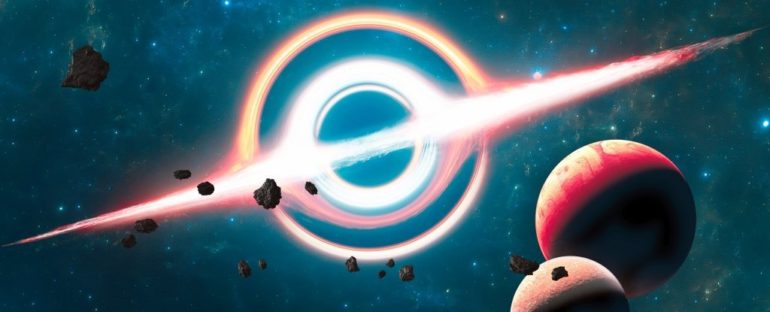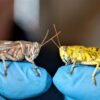Supermassive black holes tend to sit, more or less stationary, at the centers of galaxies. But not all of these awesome cosmic objects stay put; some may be knocked askew, wobbling around galaxies like cosmic nomads.
We call such black holes ‘wanderers’, and they’re largely theoretical, because they are difficult (but not impossible) to observe, and therefore quantify. But a new set of simulations has allowed a team of scientists to work out how many wanderers there should be, and whereabouts – which in turn could help us identify them out there in the Universe.
This could have important implications for our understanding of how supermassive black holes – monsters millions to billions of times the mass of our Sun – form and grow, a process that is shrouded in mystery.
Cosmologists think that supermassive black holes (SMBHs) reside at the nuclei of all – or at least most – galaxies in the Universe. These objects’ masses are usually roughly proportional to the mass of the central galactic bulge around them, which suggests that the evolution of the black hole and its galaxy are somehow linked.
But the formation pathways of supermassive black holes are unclear. We know that stellar-mass black holes form from the core collapse of massive stars, but that mechanism doesn’t work for black holes over about 55 times the mass of the Sun.
Astronomers think that SMBHs grow via the accretion of stars and gas and dust, and mergers with other black holes (very chunky ones at nuclei of other galaxies, when those galaxies collide).
But cosmological timescales are very different from our human timescales, and the process of two galaxies colliding can take a very long time. This makes the potential window for the merger to be disrupted quite large, and the process could be delayed or even prevented entirely, resulting in these black hole ‘wanderers’.
A team of astronomers led by Angelo Ricarte of the Harvard & Smithsonian Center for Astrophysics has used the Romulus cosmological simulations to estimate how frequently this ought to have occurred in the past, and how many black holes would still be wandering today.
These simulations self-consistently track the orbital evolution of pairs of supermassive black holes, which means they are able to predict which black holes are likely to make it to the center of their new galactic home, and how long this process should take – as well as how many never get there.
“Romulus predicts that many supermassive black hole binaries form after several billions of years of orbital evolution, while some SMBHs will never make it to the center,” the researchers wrote in their paper.
“As a result, Milky Way-mass galaxies in Romulus are found to host an average of 12 supermassive black holes, which typically wander the halo far from the galactic center.”
In the early Universe, before about 2 billion years after the Big Bang, the team found, wanderers both outnumber and outshine the supermassive black holes in galactic nuclei. This means they would produce most of the light we would expect to see shining from the material around active SMBHs, glowing brightly as it orbits and accretes onto the black hole.
They remain close to their seed mass – that is, the mass at which they formed – and probably originate in smaller satellite galaxies that orbit larger ones.
And some wanderers should still be around today, according to the simulations. In the local Universe, there should actually be quite a few hanging around.
“We find that the number of wandering black holes scales roughly linearly with the halo mass, such that we expect thousands of wandering black holes in galaxy cluster halos,” the researchers wrote.
“Locally, these wanderers account for around 10 percent of the local black hole mass budget once seed masses are accounted for.”
These black holes may not necessarily be active, and therefore would be very difficult to spot. In an upcoming paper, the team will be exploring in detail the possible ways we could observe these lost wanderers.
Then all we have to do is find the lost stellar-mass and intermediate-mass black holes…
The research has been published in the Monthly Notices of the Royal Astronomical Society.



